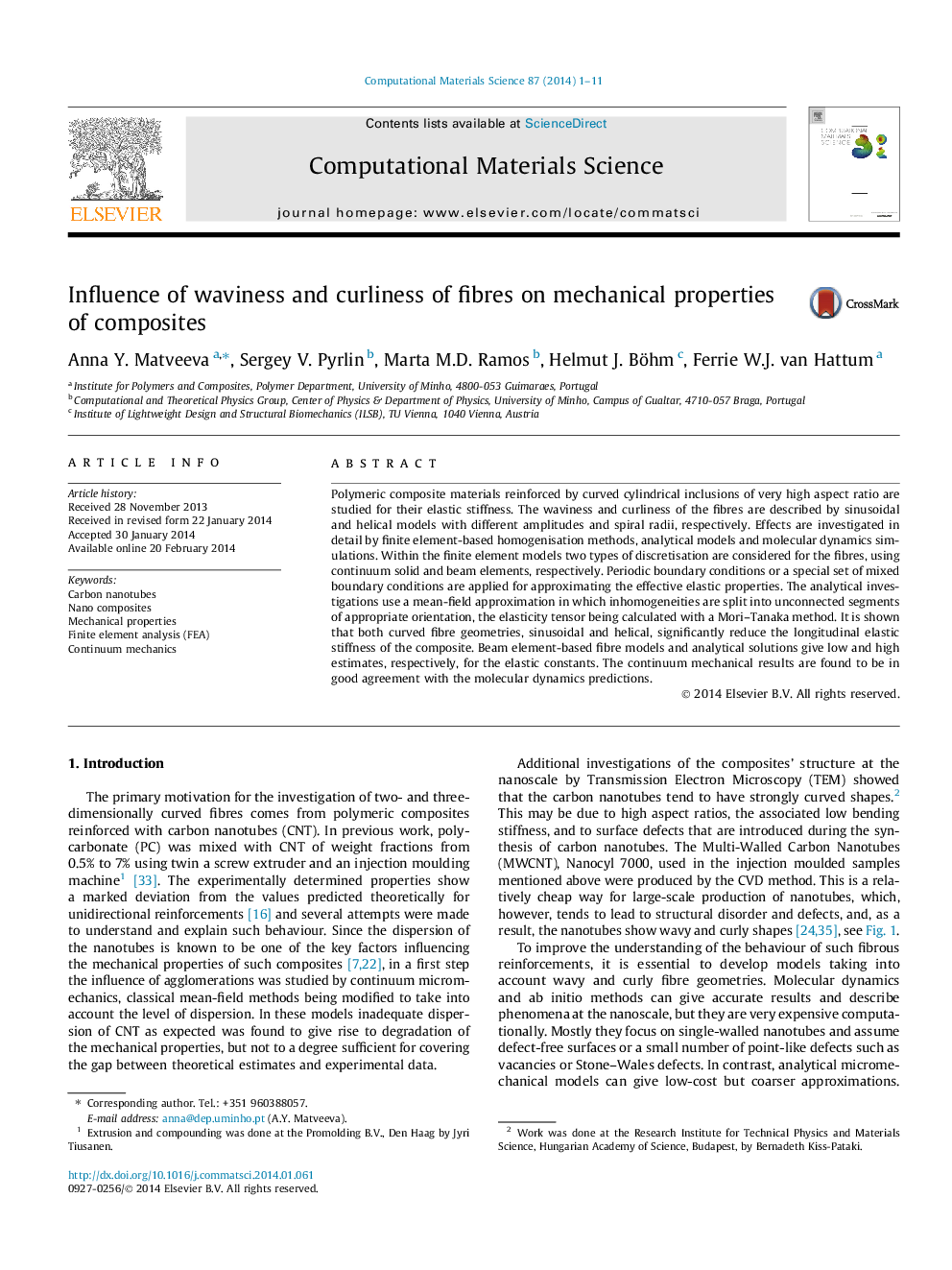| Article ID | Journal | Published Year | Pages | File Type |
|---|---|---|---|---|
| 1560534 | Computational Materials Science | 2014 | 11 Pages |
Abstract
Polymeric composite materials reinforced by curved cylindrical inclusions of very high aspect ratio are studied for their elastic stiffness. The waviness and curliness of the fibres are described by sinusoidal and helical models with different amplitudes and spiral radii, respectively. Effects are investigated in detail by finite element-based homogenisation methods, analytical models and molecular dynamics simulations. Within the finite element models two types of discretisation are considered for the fibres, using continuum solid and beam elements, respectively. Periodic boundary conditions or a special set of mixed boundary conditions are applied for approximating the effective elastic properties. The analytical investigations use a mean-field approximation in which inhomogeneities are split into unconnected segments of appropriate orientation, the elasticity tensor being calculated with a Mori-Tanaka method. It is shown that both curved fibre geometries, sinusoidal and helical, significantly reduce the longitudinal elastic stiffness of the composite. Beam element-based fibre models and analytical solutions give low and high estimates, respectively, for the elastic constants. The continuum mechanical results are found to be in good agreement with the molecular dynamics predictions.
Keywords
Related Topics
Physical Sciences and Engineering
Engineering
Computational Mechanics
Authors
Anna Y. Matveeva, Sergey V. Pyrlin, Marta M.D. Ramos, Helmut J. Böhm, Ferrie W.J. van Hattum,
